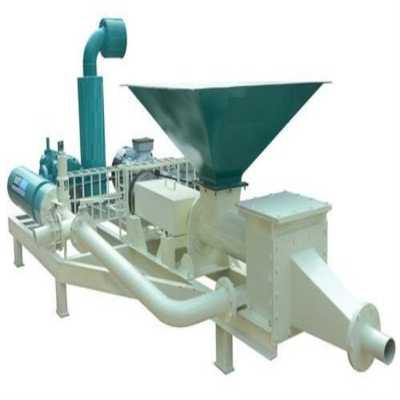Get In Touch
Get In Touch




A dual feeding system is a specialized configuration designed to provide redundant or simultaneous supply channels for various applications. This system ensures uninterrupted operation and reliability in scenarios where continuous access to resources is critical. It often involves two separate input sources or pathways that can be used interchangeably, automatically switching between them in the event of a failure to maintain seamless functionality. Dual feeding systems find application in industries like telecommunications, power distribution, data centers, and critical infrastructure, offering a fail-safe solution to prevent downtime and disruptions, even in the face of unexpected challenges or outages.
1. Input Sources: A dual feeding system comprises two separate input sources, which can be power supplies, data connections, fuel sources, or any resources critical to the application.
2. Redundancy Mechanism: Automatic switchover or load-sharing mechanisms are integrated to ensure continuous operation, should one source fail.
3. Synchronization: The system should be capable of synchronizing the input sources to prevent phase or data mismatches, ensuring seamless transitions.
4. Control Unit: A control unit or controller manages the transition between input sources, monitoring their status and performance.
5. Switching Time: The system should specify the time it takes to switch from one source to the other in the event of a failure. This is typically measured in milliseconds.
6. Monitoring and Alarms: Continuous monitoring of both input sources with the ability to trigger alarms or notifications when a source experiences issues.
7. Load Distribution: For systems involving power, the load distribution between sources should be adjustable and configurable.
8. Compatibility: The dual feeding system should be compatible with the specific infrastructure or equipment it is designed to support, such as UPS (Uninterruptible Power Supply) systems, data centers, telecommunications equipment, or industrial machinery.
9. Physical Redundancy: In some applications, physical redundancy of components such as cables, connectors, and switches may be necessary for additional reliability.
10. Safety Features: Safety mechanisms to prevent overloading, voltage spikes, or other potential hazards during switchover.
11. Scalability: The system may need to accommodate expansion or increased capacity, so scalability is an important consideration.
12. Remote Monitoring and Control: Many dual feeding systems offer remote monitoring and control capabilities for ease of management and maintenance.
13. Compliance: The system should be designed and constructed in compliance with industry standards and regulations relevant to the specific application, such as safety and electrical standards.
14. Documentation: Detailed documentation including user manuals, schematics, and maintenance guidelines.
15. Testing and Maintenance: Recommendations for testing procedures, regular maintenance schedules, and procedures for system troubleshooting.
16. Environmental Considerations: Protection against environmental factors such as temperature, humidity, and vibration, depending on the application.
1. Uninterruptible Power Supply (UPS) Systems: Dual feeding systems are crucial in data centers, hospitals, and critical infrastructure to ensure continuous power supply, seamlessly switching between the primary grid power and backup generators or batteries in case of power outages.
2. Telecommunications: In the telecommunications industry, dual feeding systems maintain constant connectivity by switching between multiple carriers or internet service providers, reducing downtime and ensuring uninterrupted communication services.
3. Industrial Manufacturing: Manufacturing facilities rely on dual feeding systems to guarantee power to mission-critical equipment, such as CNC machines, during electrical grid fluctuations or outages.
4. Data Centers: Data centers use dual power feeds to safeguard against power interruptions, allowing servers and IT equipment to operate without disruption.
5. Oil and Gas Operations: Dual feeding systems support the continuous operation of critical equipment in remote oil and gas facilities, reducing downtime due to power supply issues.
6. Emergency Services: Emergency services like police stations, fire departments, and medical facilities use dual feeding systems to maintain uninterrupted communication and power supply for critical services.
7. Aircraft and Aerospace: In aerospace applications, dual feeding systems ensure reliable power supply and data connectivity for mission-critical systems in aircraft, spacecraft, and ground control centers.
8. Transportation Infrastructure: Dual feeding systems in transportation hubs, like airports and train stations, maintain continuous power for security systems, baggage handling, and passenger information displays.
9. Financial Institutions: Banks and financial institutions employ dual feeding systems to guarantee continuous operation of ATM machines, online banking services, and financial trading platforms.
10. Water Treatment Plants: Water treatment facilities use dual feeding systems to prevent interruptions in water purification and distribution systems, ensuring a consistent water supply to communities.
11. Military Operations: The military relies on dual feeding systems to maintain power and communication in mission-critical situations, such as command centers and radar installations.
12. Healthcare Facilities: Hospitals and healthcare centers utilize dual feeding systems to ensure uninterrupted power for life-saving medical equipment and patient care systems.
13. Remote Research Stations: Scientific research facilities in remote locations require dual feeding systems to maintain power and data connections for experiments, data collection, and communication.
14. Mining and Resource Extraction: Dual feeding systems are used to ensure continuous power for critical equipment in mining operations, enhancing safety and productivity.
15. Disaster Recovery Centers: Facilities designated for disaster recovery and business continuity depend on dual feeding systems to sustain operations during emergencies.


